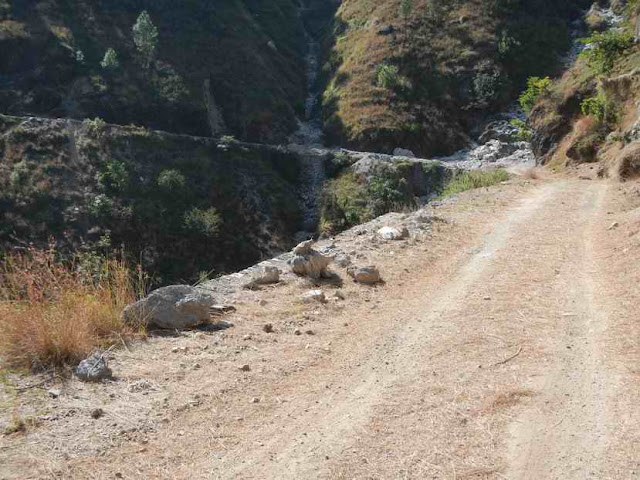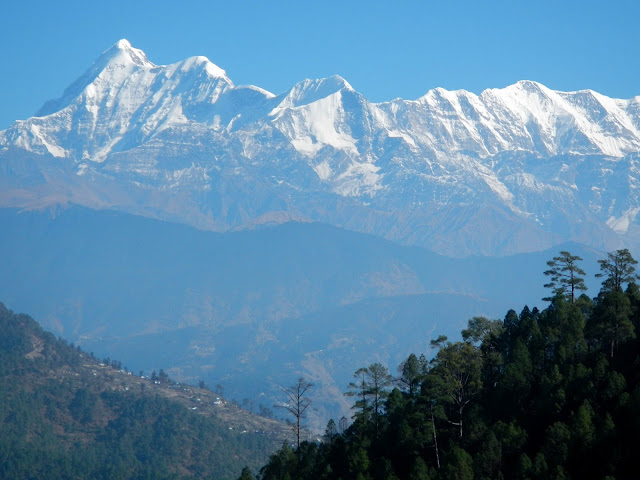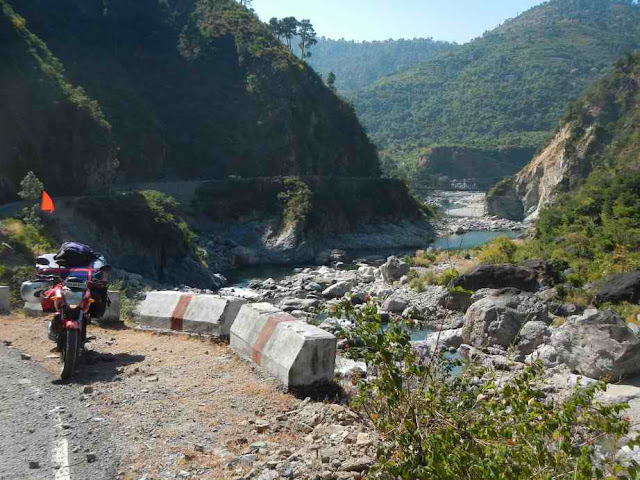Unlike the way to Munsyari which
generally moves parallel to the valleys (north and south), the way to Joshi
Math goes east and through the mountains. Since most of the goods and people
move into and out of the mountains using the north south routes, the cross
mountain roads are rarely used. For much of the day I only passed two vehicles.
Even though the distance is not too far much of the route was at 15-20 KPH
(10-13 MPH). What the route lacked in being a road it certainly made up for in
scenery and vertical relief.
This is a National Highway by the
way.
A friend sent me the following
link that gives a video view of the situations often encountered buts its
rather sensationalized. The video shows only every day run of the mill stuff.
Waterfalls, for instance, over the road., occur regularly often nearly every
inside curve contains a waterfall. The bad ones are where the force of the
water has washed away the road material and you are left with only large rocks
for a surface. This is bad enough to go across but a foot of rushing water
makes it even more interesting.
On the way up the valley along
the river flowing from Badrinath and Joshi Math I looked over the edge and saw
an interesting construction project. A true Bridge to Nowhere. It is hard to
see from the photo, but I am looking straight down nearly 1,000’ at the bottom
is a large piece of construction equipment excavating the other side which is
also as vertical. Since there is no way it could be for a road (or you never
know) I can only assume its for some hydroelectric project.
Joshi Math sits above the confluence
of two rivers at about 7,000’ with views up both valleys.
The following day I am heading
higher into the midst of the big peaks, to Badrinath.
Badrinath is around 9,000’ and is
a major pilgrimage destination during the summer months for its important
temple. Mid October is when the snows start so things are about to shut down
for the winter. Since Badrinath is situated in the big mountains, the road
along the valley is on even stepper ground.
Moonset over one of the side
valleys coming into the main river.
In many places the road is
actually like a half tunnel cut into the rock face.
As the road ascended, some of the
glaciers started to come down near the road.
Upon arrival, the first thing I
do (well after a delicious lunch at a place directly in front of the temple) is
to ascend a path up to the base of the snowfields.
After a few thousand feet of
climbing one is surrounded by some of the most stunning rock and ice this
planet has to offer.
The sun is starting to get low so
I turn around and head down. Descending into Badrinath one is faced with a
complexly different view.
About half way down, Badrinath
comes into view.


















































